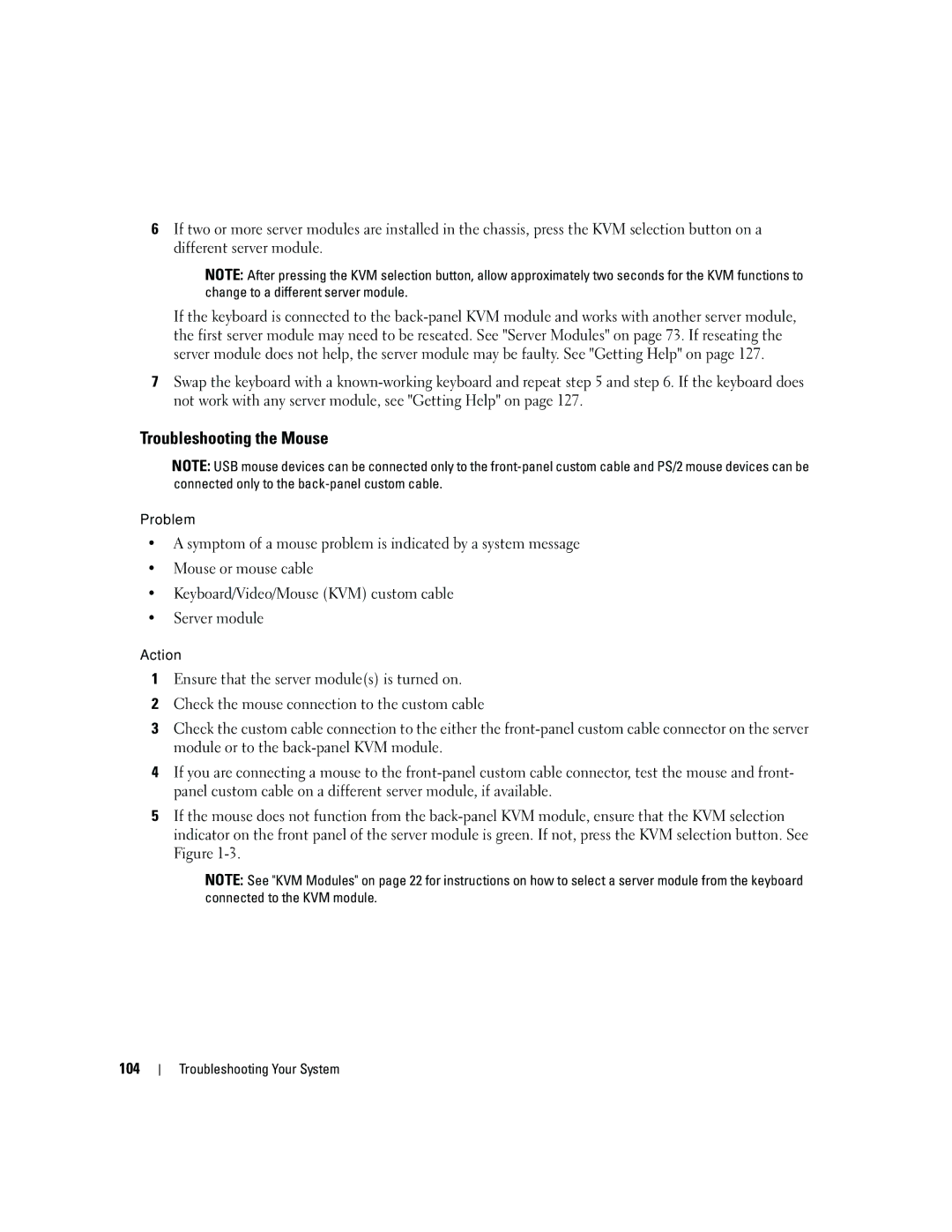6If two or more server modules are installed in the chassis, press the KVM selection button on a different server module.
NOTE: After pressing the KVM selection button, allow approximately two seconds for the KVM functions to change to a different server module.
If the keyboard is connected to the
7Swap the keyboard with a
Troubleshooting the Mouse
NOTE: USB mouse devices can be connected only to the
Problem
•A symptom of a mouse problem is indicated by a system message
•Mouse or mouse cable
•Keyboard/Video/Mouse (KVM) custom cable
•Server module
Action
1Ensure that the server module(s) is turned on.
2Check the mouse connection to the custom cable
3Check the custom cable connection to the either the
4If you are connecting a mouse to the
5If the mouse does not function from the
NOTE: See "KVM Modules" on page 22 for instructions on how to select a server module from the keyboard connected to the KVM module.
104
Troubleshooting Your System
